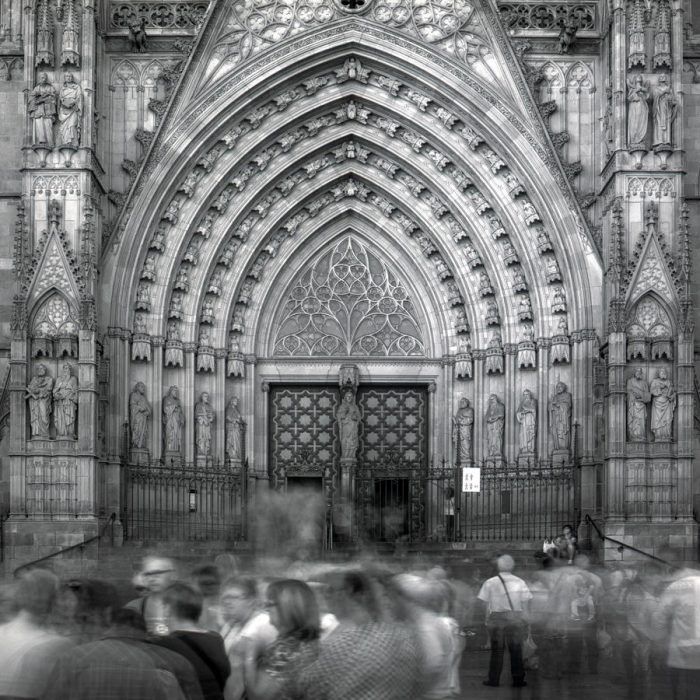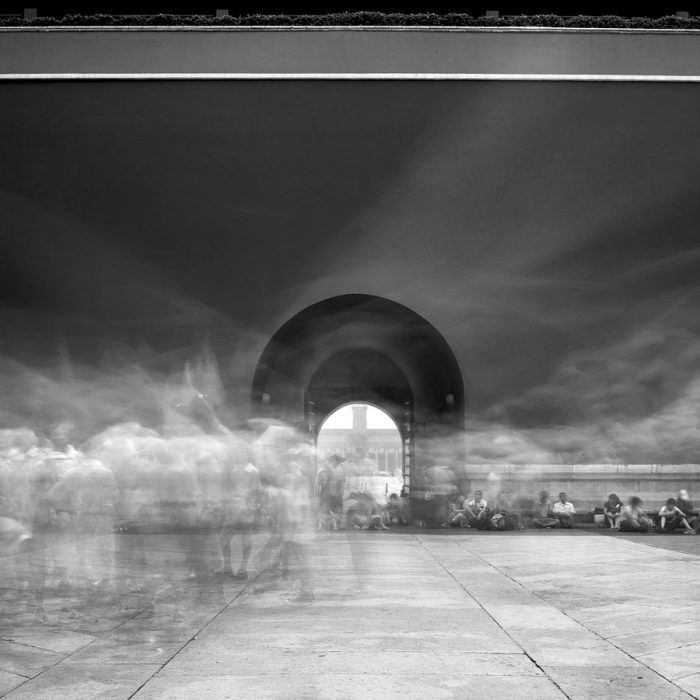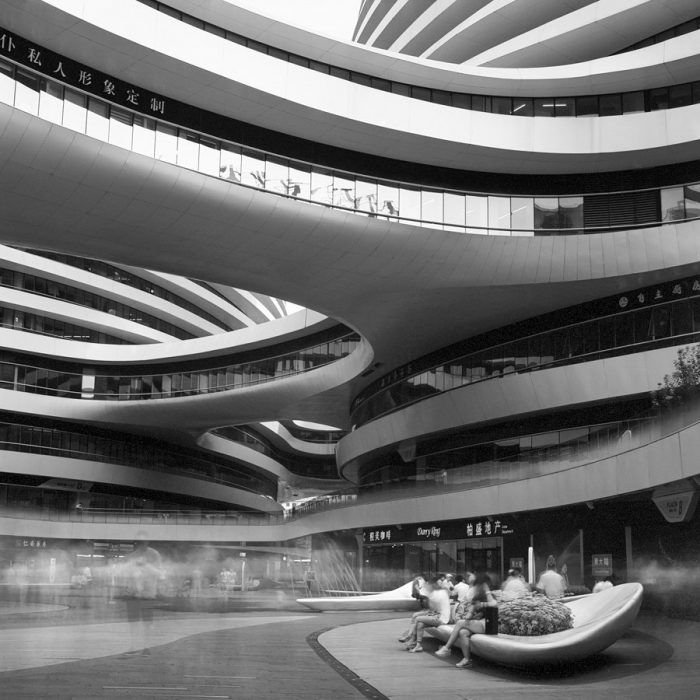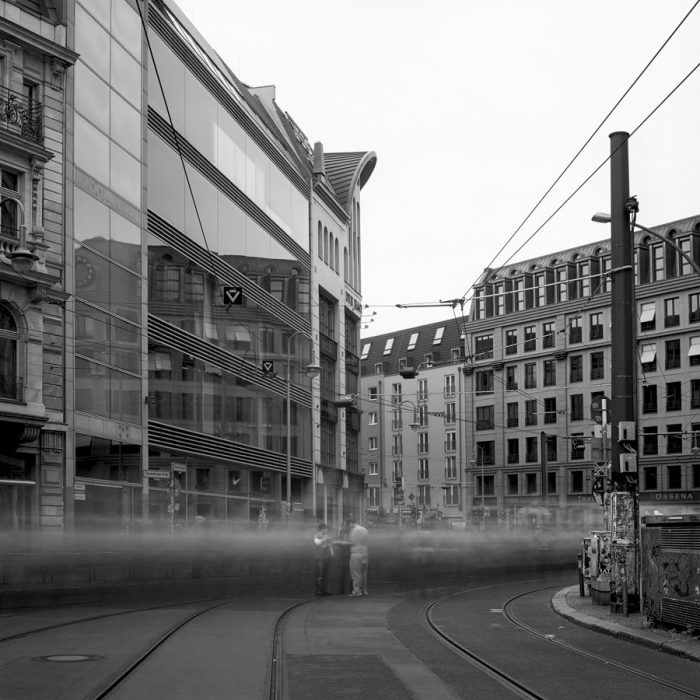blog
Interview with photographer Robert Herrmann

Cary Benbow (CB): Why do you photograph, or what compels you to make the images you create?
Robert Herrmann (RH): I am naturally driven to shape and light. I originally trained as an architect. Besides I have been taking photographs for my own pleasure for a long time. Since a couple of years, though, I more and more found myself using photography as a conceptual medium. I think the way I was trained in design thinking, first analyze, try to fully grasp a subject and then put an idea to work, has a huge impact on how I think and work photographically.
In his book “The Nature of Photographs” Stephen Shore writes “Photography is inherently an analytic discipline. Where a painter starts with a blank canvas and builds a picture, a photographer starts with the messiness of the world and selects a picture […] imposes an order on the scene – simplifies the jumble by giving it structure.” I like this idea of establishing order in chaos. It is an urge, that is profoundly human, I think.
CB: Can you please explain the idea behind your portfolio images submitted to this issue? How do they relate to your other projects, or how is it significantly different?
RH: I am interested in how human action influences our environment which is something all my works revolve around. The images I submitted belong to my longest (and still running) project “60-second slices of present”. This project is specifically about my fascination for cities. Every time I visit a new city I try to understand its patterns and underlying principles.
The aspect I always find myself coming back to is the human scale, a term mostly associated with discourses in architecture and urbanism. It relates to our physical proportion to the built environment. But I think there is also a temporal aspect about it. As the title suggests “60-second slices of present” is about visualizing time, too. Technically speaking, I expose each frame for a period of one minute, so then what I get is not a capture of a moment but rather a frame charged with a scene of action.

CB: Please say a bit more about the concept of human scale – how do you feel it is important for the viewer to understand when looking at your work?
RH: I don’t think it is important that the viewer understand about this aspect immediately by looking at these images. At first it is important to me while producing them. I have to be able to connect to the space of the city I am in. I find it easier to connect to places that have a human scale, that means, where buildings stand close to each other, but still leave enough space for public activities in between. I think the size and shape of the space in between and how it is used is what defines the character of a city. Still, many places I visit are far from transmitting this comfortable ambiance I am speaking of. In some cities the streets are so wide that you cannot even clearly see the other side, because they were build for cars and not for humans.
CB: In your opinion, what makes a good photograph?
RH: A photograph I consider a good one makes me think about something I do not necessarily see in the picture itself. A good photo contains a trigger for a possible train of thought.
CB: Where do you get the inspirations for your personal photography?
RH: I read books, I love to travel, go to see exhibitions, talk to other artists and exchange ideas. But when I work, I like to work alone, because it helps me to stay focused.

CB: What/who are your photography inspirations – and why? The Bechers immediately come to mind for me – especially for your project EFH
RH: I love the work of Hiroshi Sugimoto. Especially the “Theaters”, but also the “Dioramas”. His conceptual strength is a huge inspiration to me.
I am also very inspired by Stephen Shore’s “Uncommon Places”, in which he illustrates the extraordinary beauty of the mundane. I am fond of Joel Sternfeld’s “American Prospects”, mostly for his enriching the seemingly banal with a tad of quirky humour.
I also like the works of Julius Shulman, Hertha Hurnaus, Iwan Baan, Hélène Binet, Bas Princen, Gisela Erlacher, Nadav Kander, Martin Kollar and Peter Bialobrzeski
As to the pictorial grammar I used in the EFH series, yes, it is a quote of Bernd and Hilla Becher’s typologies, but an ironic quote I did to find out how it feels to speak their language. It was fun, but I don’t take it too seriously.
CB: How would you describe your work to someone viewing it for the first time?
RH: On the surface it is, at its best, an aesthetic play with shapes, light and composition, at its worst, it’s merely boring. But if you take your time, look and think, you might get an idea.

CB: How do you approach a project that takes years to complete, and multiple cities around the world?
RH: With patience, passion and spending every extra money just for that. It is hard to say, when or even if I ever will complete it, because I don’t know yet how this completion would look like. I have been asked a couple of times, when the first photo book will be published and I am happy to know that there are people who would buy it. Still, I think, I need way more time to travel to many more cities around the globe and I want to collect more image material.
In the end, maybe I don’t care much about finishing it in a hurry, because I enjoy the journey so much.
For more information, and to view other projects by Robert Herrmann, visit his website: www.robertherrmann.com
Location: Online Type: Featured Photographer, Interview
Events by Location
Post Categories
Tags
- Abstract
- Alternative process
- Architecture
- Artist Talk
- artistic residency
- Biennial
- Black and White
- Book Fair
- Car culture
- Charity
- Childhood
- Children
- Cities
- Collaboration
- Community
- Cyanotype
- Documentary
- Environment
- Event
- Exhibition
- Faith
- Family
- Fashion
- Festival
- Film Review
- Food
- Friendship
- FStop20th
- Gender
- Gun Culture
- Habitat
- Hom
- home
- journal
- Landscapes
- Lecture
- Love
- Masculinity
- Mental Health
- Migration
- Museums
- Music
- Nature
- Night
- nuclear
- p
- photographic residency
- Photomontage
- Plants
- Podcast
- Portraits
- Prairies
- Religion
- River
- Still Life
- Street Photography
- Tourism
- UFO
- Water
- Zine

Leave a Reply